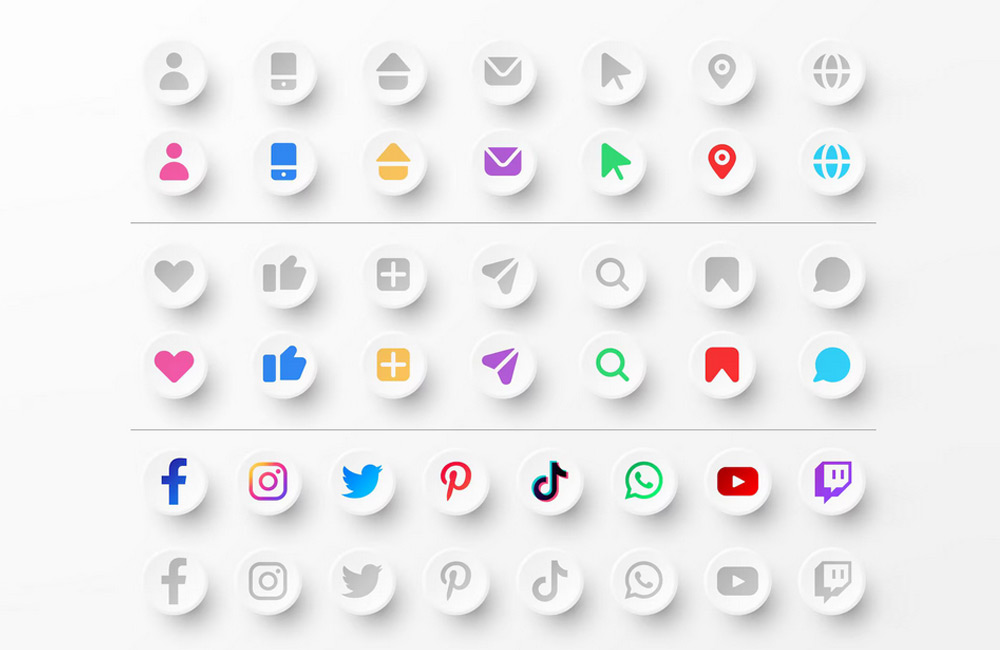Illustrations and icons are indispensable in modern websites. They support communication, enhance user guidance, and give your website personality. In 2025, designers are focusing more on creative, hand-drawn elements and flexible vector icons that integrate seamlessly into responsive layouts.
Key Trends in Illustrations
- Hand-drawn & Organic: Natural lines and imperfect shapes look authentic and friendly.
- Minimalism: Reduced color palettes and simple shapes improve readability and user experience.
- 3D Elements & Depth: Subtle shadows, layering, and perspective create visual interest.
- Animation: Small, smooth movements make illustrations come to life and grab attention.
Design Trends in Icons
- Vector & Scalability: Icons should adapt to different screen sizes without losing quality.
- Consistency: Unified styles ensure recognition and a professional look.
- Linear Icons & Monoline: Simple, clean lines remain highly popular.
- Color Accents: Colorful icons can highlight important elements but should be used sparingly.
Tips for Usage
- Place icons and illustrations strategically to support content, not overload it.
- Prefer vector formats (.svg) to keep loading times low.
- Consider accessibility: icons should be labeled or include
alttext. - Observe trends but keep the corporate identity in mind so your brand remains recognizable.
Conclusion
Illustrations and icons remain a central part of web design in 2025. They help make content understandable, improve user experience, and create a unique brand identity. At aurelix, I ensure that icons and illustrations are used in a trend-conscious, functional, and consistent way.
Image: freepik.com

